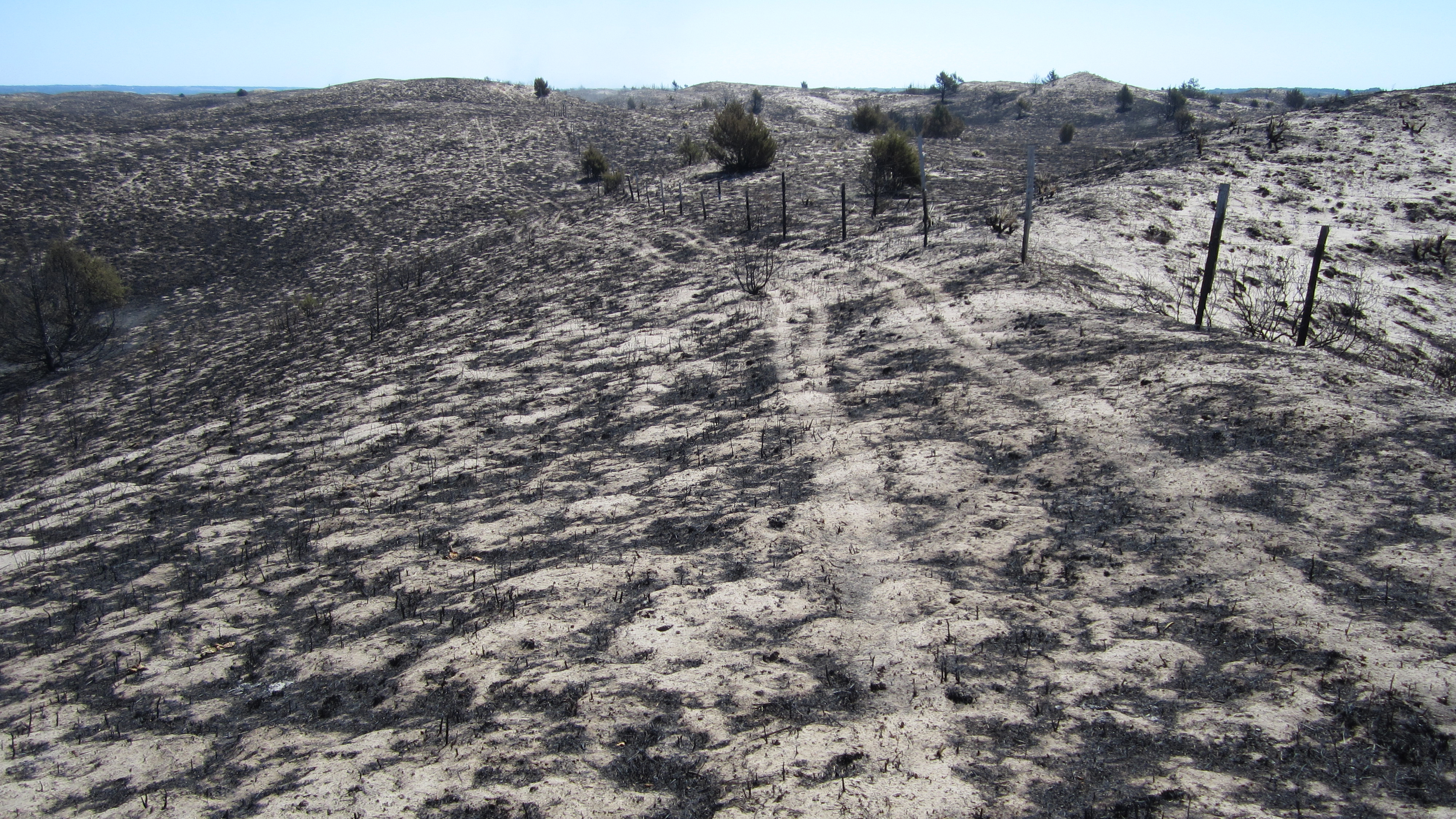
After wildfires ravaged hundreds of thousands of acres of grasslands and forest in northwestern Nebraska in 2012, some feared that the national landmark Sandhills ecoregion had been irreparably damaged.
They worried that the one-two punch of record-setting fires and unusually prolonged drought had pushed the burned areas beyond the tipping point. Would the grass-covered dunes be reduced to a dust bowl of drifting sand?
A new study from University of Nebraska-Lincoln rangeland ecologists, however, appears to put those fears to rest. Painstakingly gathered samples of plant material from burned and unburned areas of the Niobrara Valley Preserve showed that within two years, the vegetation growing on the burned areas was virtually indistinguishable from unburned areas.
In fact, study co-author Dirac Twidwell, of Nebraska’s agronomy and horticulture department, says state and federal officials need to change their management policies because of the study’s findings. Highway signs calling for rangeland fire prevention should be removed, because they send a false message about fire’s threat to the Sandhills.
“The Sandhills recovered remarkably fast – that’s what grasslands do,” Twidwell said. “They thrive with fires.”
The new study concludes that overgrazing and long-term declines in rainfall pose greater threats than fire to the Sandhills ecosystem.
In fact, the absence of fire may cause more lasting problems for the Sandhills ecosystem, by allowing it to be overrun by junipers, aka the invasive eastern red cedar.
“A major concern, given findings in our study, is that policies and statutes that exaggerate, without scientific evidence, concerns over destabilization are promoting fire prevention to avoid conversion to an alternative ecosystem state (active sand dunes),” the authors conclude in the article published in Rangeland Ecology & Management.
“However, (fire) prevention is unnecessary to prevent destabilization and might actually contribute to the emergence of an undesirable ecosystem state that often emerges in the absence of fire in grasslands: woody plant invasion, e.g. Sandhills grassland conversion to juniper woodland,” they wrote.
Other scientists involved in the study were Jack R. Arterburn, the lead graduate student and now an assistant extension educator at the Panhandle Research and Extension Center in Rushville; Walter Schacht, an agronomy and horticulture professor; David Wedin, from the School of Natural Resources; and Carissa Wonkka, a post-doctoral researcher in agronomy and horticulture.
The Sandhills area of northwest Nebraska is one of the largest contiguous grassland ecoregions remaining in North America. Temperate grasslands like the Sandhills are among the most threatened ecological systems on Earth.
Twidwell has been at the forefront of efforts to study the historical importance of fire in grasslands and why grasslands are disappearing today. He is among an international network of scientists who are working to demonstrate that fire reduction efforts actually have worsened wildfires. He and his colleagues maintain that science-based land management, including prescribed burns to reduce overgrowth and invasive species like eastern red cedar, is crucial to preventing large, out-of-control fires that threaten lives and property.
Alicia Hardin, wildlife division administrator for the Nebraska Game & Parks Commission, said state officials are working with private landowners and non-government organizations like Pheasants Forever to encourage management practices based on the latest science, including the use of fire to fight invasive species and overgrowth. In fact, she said, those rangeland fire prevention road signs once used in the Sandhills have already been taken down thanks to a request by the Sandhills Task Force and the assistance of the Department of Roads.
“This study shows Sandhills grasslands are more resilient than we thought,” she said. “We see that all across the state, when it comes to grassland management. Grasslands evolved with fire and they are a lot more resilient than people think they are.”
The researchers studied fire’s effects on more than 35 square miles of grasslands used to graze bison in the Niobrara Valley Preserve, which is owned by The Nature Conservancy.
More than 20 square miles of the land was burned during the July 2012 Fairfield Creek Wildfire, which occurred in the midst of a nine-month drought with precipitation 72 percent below normal.
In 2014, the researchers collected 400 samples of grassland vegetation in burned and unburned patches of the bison pastures. They clipped vegetation to the ground; sorted it according to whether it was living, dead but standing, or litter; and dried it to remove all moisture. They then weighed the samples to calculate the differences in vegetation biomass in burned and unburned areas. They repeated the process in 2015.
The scientists found no significant difference in living vegetation biomass after two years, although there was less dead plant material in the areas that had been burned by the 2012 fired. Three years post fire, there were no significant differences in the amount of dead plant material, as well.
Even when combined with drought, the fire was not sufficient to destroy the mass of roots below ground, the authors explained. Nor did the fire change the type of plants growing in the region. A 2016 study conducted by Arterburn showed no significant differences in the plant community composition between burned and unburned areas.
Chris Helzer, The Nature Conservancy's director of science for Nebraska, said the study’s findings could encourage Sandhills landowners to use prescribed fires more frequently to manage rangeland.
“I think there’s legitimate concern about the use of prescribed fires in the Sandhills,” he said. “It’s something that needs to be applied with prior thought. But it’s needed, particularly in areas that are seeing cedar encroachment.”
Besides the potential danger of fire, some land owners have been reluctant to burn off Sandhills grassland because they think it could make their pastures too fragile for grazing in the following year. The new study should help allay those concerns, Helzer said.
Nebraska Today
More details at: http://news.unl.edu